Doug Nye: Celebrating the one-offs
 Doug Nye
Doug Nye
While at Revival we celebrate the great teams – like Ecurie Ecosse – or great marques – like Vanwall – there will always be a place at the Meeting for the more obscure makes, and the one-offs... of which, within the British motor racing scene, there have been many.

This might seem odd to a younger audience raised on a diet of one-make racing, and of single-seat Formulae supplied by just one constructor. It wasn’t quite like that when Goodwood was a current topline International race circuit, 1948-66.
No sir. And what really sparked off a tremendous surge in the number of hyper-enthusiastic – and some might say hyper-optimistic – British constructors was the growth of un-supercharged 2-litre Formula 2 racing from 1949 forward. While this country could hardly produce a racing engine worth a light in terms of power and torque – and often reliability – there were a number of practically-talented individuals, and small sports car companies, who would rise to the challenge of building a car and going racing with it. Some of them, like John and Charlie Cooper – and the HW Motors company partners George Abecassis and John Heath – who respectively built the highly-successful Cooper-Bristol customer cars and the HWM works cars – would achieve great things. But a number of more tentative commercial and private projects also emerged – which popular broad-brush racing history largely overlooks…
You see, in those days it was – just about – possible to cover one’s costs by trailing around the countryside, and the Continent, picking up appearance and start money, and hopefully a little bit of prize and trade-bonus money – if you were lucky.
One of the small companies to produce a 2-litre Formula 2 car in that period was Frazer Nash of Falcon Works, London Road, Isleworth. In 1952 the enthusiastic backer of driver Ken Wharton – Peter Bell – ordered a single-seat open-wheeled version of the Frazer Nash Le Mans Replica sports car to race Internationally in Formula 2.
The car was wrapped in a distinctively ugly aluminium slipper body with a long, arching bonnet-top air intake to feed the 6-cylinder Bristol engine’s three downdraught Solex carburettors. The Peter Bell/Ken Wharton team intended to campaign this Frazer Nash in Formula 2 while running its famous ERA for Wharton’s speciality, which was hill-climbing. They also ran a Le Mans Rep in sports car events. They were busy boys. And with the ERA on board, they named their little team ‘Scuderia Franera’.

1953 - Horace Richards’s HAR was Riley-based
Their new Frazer Nash F2 car made its debut at May Silverstone with Wharton finishing sixth in Heat and seventh in the Final. They then made a long trip to Berne for the Swiss Grand Prix Drivers’ World Championship round. Wharton soldiered round, inherited places as faster runners struck trouble, and finally took fourth place to secure the only World Championship points of his long career.
At the Nurburgring, Germany, he then placed third in the EifelRennen, and was ninth in Heat for the Monza Autodrome GP in Italy before the rear-axle locating A-bracket broke in the Final there – which must have been an extremely alarming experience as the rear wheels started steering at high speed…
At Spa for the Belgian Grand Prix, Wharton was actually disputing fifth place with young Mike Hawthorn in his Bob Chase-owned Cooper-Bristol when he pressed too hard on the rain-damped surface and slithered off through a roadside barbed-wire fence – fortunately escaping serious injury.
Recovered in time for the Dutch Grand Prix at Zandvoort, Wharton retired when the single-seater Frazer Nash’s rear axle failed, and finally at Turnberry, Scotland – yes, before they turned the aerodrome over to the horrors of golf – the Bristol engine failed. The car was withdrawn forthwith.

1947 British Empire Trophy, Douglas, Isle of Man - David Hampshire in Reg Parnell’s ‘Challenger’ with Delage engine and another rarity - one of the two E-Type ERAs built
AFN Ltd – manufacturers of the Frazer Nash line – also found club-racing customers for two sister single-seaters – Scotsman Bill Skelly (whose car was much more attractive than Bell’s, sporting a Le Mans Replica-type radiator grille and more attractive body lines – and Irishman Dickie Odlum. But neither aspired to International competition.
The HAR was another British Formula 2 hopeful at the time, built by Horace Richards – an engineer from Smethwick in the Midlands who put together his Riley-based Formula 2 car in his own light engineering works. He subsequently drove it reliably and safely – he was no hard-charger – for several years, always in-home events, without troubling either front-runners or most mid-fielders.
His car had a twin-tube chassis with torsion-bar springing and wishbone suspension front and rear, which was powered by a Riley 6-cylinder engine. Richards invested in casting an elektron-magnesium casing which provided drop gear ahead of the final-drive to lower the propeller-shaft beneath the driver’s seat, while alternative drop gears provided six easily-changed final-drive ratios. His master plan was to provide replica cars with a choice of 1,100cc, 1,500cc or 2-litre engines to attract the widest range of customer from fellow enthusiasts – but that didn’t really work out for him.
The car’s optimum performance remained indistinguishable from his as a racing driver, but Horace Richards campaigned his HAR in British Formula 2, Formula Libre and even 2½-litre Formula 1 events until the end of 1955. Even then the HAR raced on at club level; and even appeared as a mammoth Formula Junior entry as late as 1960, at Mallory Park.

Goodwood - Jack Fairman in the one-off Turner Formula 1 and 2 car
The enthusiastic private owner-driver John Webb asked Turner to convert his ex-Reg Parnell MG K3 Magnette – a pre-war product – into a single-seater. It was powered by the unique twin-cam-headed MG engine converted by Laurence Pomeroy and now Turner developed this engine further and Webb – duly impressed – ordered an all-new Turner F2 car for the 1953 season.
One of Turner’s earliest sports car customers had been Ken Rose, whose father Hugh was chief engineer of Lea-Francis. The contact enabled Turner to obtain a 1767cc ‘Leaf’ engine whose block had been re-cast in aluminium instead of iron, which normally made the engines too heavy to be properly competitive. Enlarged – like those used by the Connaught equipe – to 1960cc and fitted with twin-plug ignition and even the frontier-sophistication at that time of SU fuel-injection, Turner eventually claimed 145bhp at 6,000rpm for it. This engine drove through a hefty Armstrong-Siddeley pre-selector gearbox – why did so many Brits use those things when the Cooper-Bristols did so well with normal lightweight manual mashers?
John Webb drove his Turner in minor British Formula 2 races and in 1954 adopted a 2 ½-litre Alta engine for the jump into the new Formula 1 category. Jack Fairman drove at May Silverstone – finishing sixth in Heat and 13th in the Final. But the Turner-Alta was not very reliable while on one occasion poor Webb rolled it at Crystal Palace. But it survived…
Mention of Reg Parnell – above – also reminds me of the Derby road haulier – and pig farmer – making a foray into racing car construction just postwar with another one-off. After making his name racing MGs in the mid-1930s, in 1939 he had bought the BHW – Bugatti-Hassan-Wilkins – 4.9-litre Bugatti straight-8 engined special only to find it was “extremely temperamental”. Meantime he also drove a Maserati owned by Mrs Hall-Smith, and then decided to fund his own new 1100/1500cc Voiturette (Formula 2) project of his own. He first christened it ‘The Challenge’ before adopting more loosely the name ‘Challenger’ – both names being a play upon the name of Parnell’s design partner, an engineer named Allen.

1952 Ulster Trophy, Dundrod - one-offs take the start - Bobby Baird in the Baird-Griffin (left) - Prince ‘Bira’ in his OSCA V12 - Geoff Richardson in his RRA (No 18) - with Ron Flockhart in the ‘common’ ERA at right...
He had the new car’s chassis manufactured for him by Rubery Owen of Darlaston – who would first back and then take over the postwar BRM Grand Prix car project in its entirety. Parts were made for him by other specialists and the car was to be clad in bodywork styled after the contemporary Mercedes-Benz W154/63 Grand Prix car. Engineer Allen’s Parnell engine was based upon a highly-supercharged MG experience but the outbreak of war in September 1939 brought the project screeching to a halt.
The chassis and body assembly, powered by an ERA 6-cylinder engine with pre-selector gearbox – made its debut at Prescott hill-climb in July 1939 but on its first run ‘Challenger’ gushed oil over the starting area and on its second a blocked fuel line left it stuttering up the incline, slowest in class. Postwar, Parnell installed a 1927 1½-litre ½-litre Delage straight-8 supercharged engine in the chassis and in this form the car was campaigned by his friend David Hampshire – with minimal impact. It finally made its racing debut in August 1947, in the British Empire Trophy race around the houses at Douglas, Isle of Man. Hampshire survived 19 laps until the car’s magneto failed. The car did not reappear.
In fact, it just vanished from the British scene, Parnell selling it to an American owner for hard cash. ‘Uncle Reg’ – Britain’s best frontline racing driver just postwar and very much Goodwood’s first great star with his ‘San Remo’ Maseratis, the debutant BRM V16 and the ‘ThinWall Special’ Ferraris – was one of the most astute and successful wheeler-dealers the British motor racing world has ever featured. A going-nowhere, obsolescent, pre-war one-off racing car with no future – or a fistful of crisp greenback US dollars? No contest really was it…
Photography courtesy of The GP Library
Doug Nye





